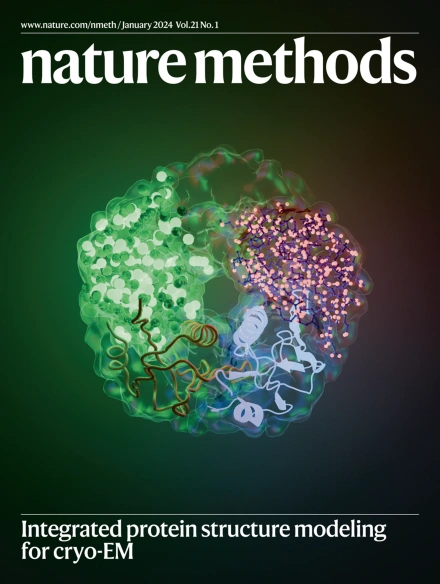Multiplexing cortical brain organoids for the longitudinal dissection of developmental traits at single-cell resolution
IF 36.1
1区 生物学
Q1 BIOCHEMICAL RESEARCH METHODS
引用次数: 0
Abstract
Dissecting human neurobiology at high resolution and with mechanistic precision requires a major leap in scalability, given the need for experimental designs that include multiple individuals and, prospectively, population cohorts. To lay the foundation for this, we have developed and benchmarked complementary strategies to multiplex brain organoids by pooling cells from different pluripotent stem cell (PSC) lines either during organoid generation (mosaic models) or before single-cell RNA sequencing (scRNA-seq) library preparation (downstream multiplexing). We have also developed a new computational method, SCanSNP, and a consensus call to deconvolve cell identities, overcoming current criticalities in doublets and low-quality cell identification. We validated both multiplexing methods for charting neurodevelopmental trajectories at high resolution, thus linking specific individuals’ trajectories to genetic variation. Finally, we modeled their scalability across different multiplexing combinations and showed that mosaic organoids represent an enabling method for high-throughput settings. Together, this multiplexing suite of experimental and computational methods provides a highly scalable resource for brain disease and neurodiversity modeling. This paper develops two approaches for multiplexing cortical organoids and SCanSNP, a method for deconvolving cell identities, to trace neurodevelopmental trajectories at scale.

多路脑皮质类器官在单细胞分辨率纵向解剖发育特征。
考虑到实验设计需要包括多个个体和潜在的人群群体,以高分辨率和机械精度解剖人类神经生物学需要可扩展性的重大飞跃。为了奠定这一基础,我们通过在类器官生成(马赛克模型)或单细胞RNA测序(scRNA-seq)文库制备(下游多路复用)期间汇集来自不同多能干细胞(PSC)系的细胞,开发并对多种脑类器官的互补策略进行基准测试。我们还开发了一种新的计算方法,SCanSNP,并一致呼吁反卷积细胞身份,克服目前在双重和低质量细胞鉴定中的临界。我们验证了这两种多路复用方法以高分辨率绘制神经发育轨迹,从而将特定个体的轨迹与遗传变异联系起来。最后,我们模拟了它们在不同多路复用组合中的可扩展性,并表明马赛克类器官代表了高通量设置的使能方法。总之,这套实验和计算方法的多路复用套件为脑部疾病和神经多样性建模提供了高度可扩展的资源。
本文章由计算机程序翻译,如有差异,请以英文原文为准。
求助全文
约1分钟内获得全文
求助全文
来源期刊

Nature Methods
生物-生化研究方法
CiteScore
58.70
自引率
1.70%
发文量
326
审稿时长
1 months
期刊介绍:
Nature Methods is a monthly journal that focuses on publishing innovative methods and substantial enhancements to fundamental life sciences research techniques. Geared towards a diverse, interdisciplinary readership of researchers in academia and industry engaged in laboratory work, the journal offers new tools for research and emphasizes the immediate practical significance of the featured work. It publishes primary research papers and reviews recent technical and methodological advancements, with a particular interest in primary methods papers relevant to the biological and biomedical sciences. This includes methods rooted in chemistry with practical applications for studying biological problems.
 求助内容:
求助内容: 应助结果提醒方式:
应助结果提醒方式:


